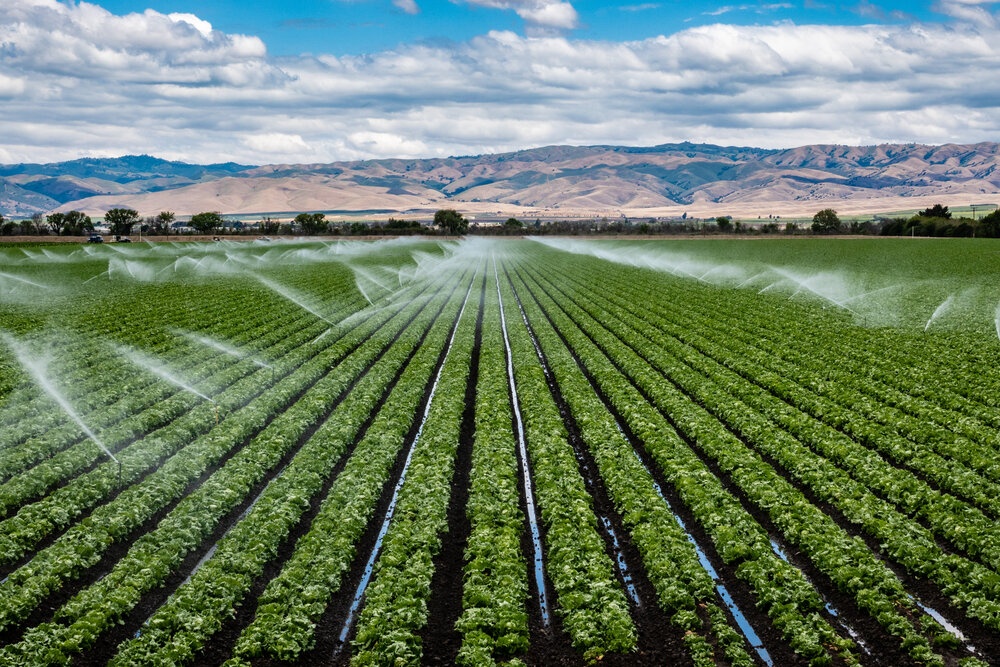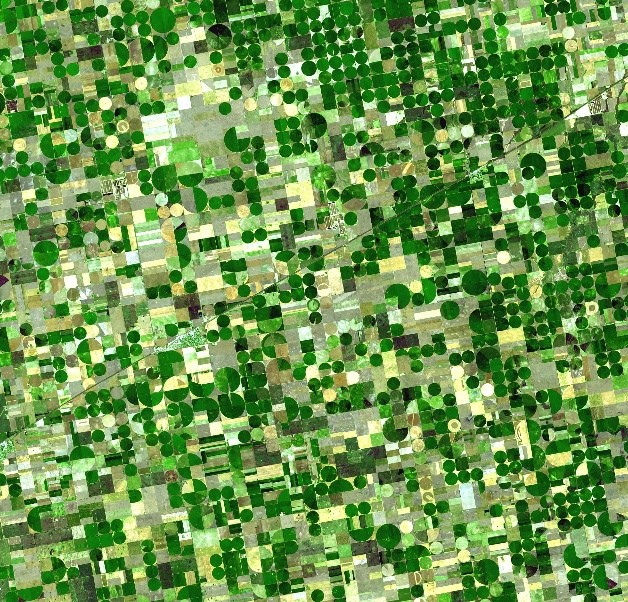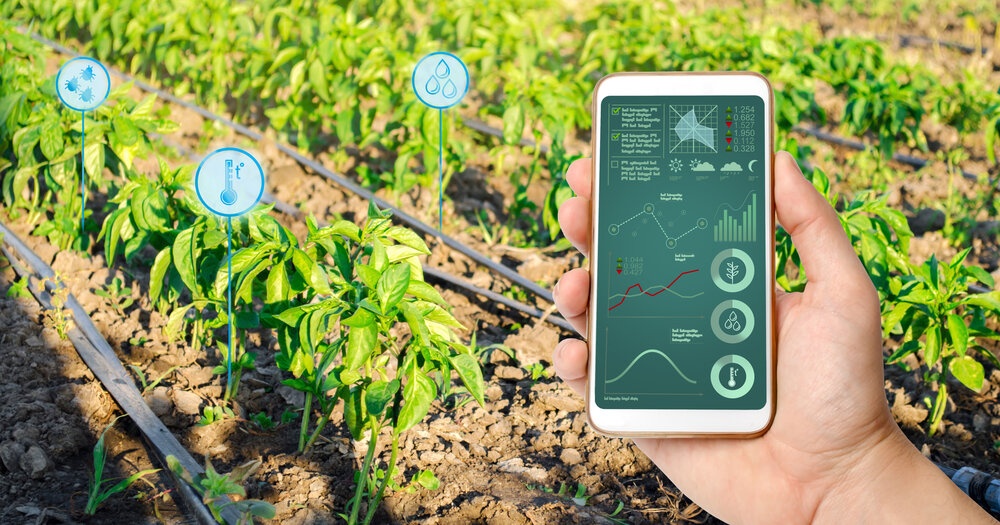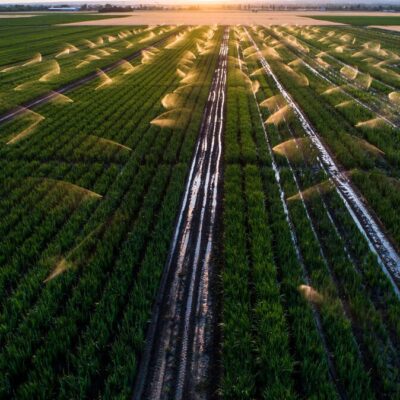With a growing global population driving a rapid increase in demand for food supplies, the agricultural industry struggles to grow the crops so desperately needed in order to avert starvation in many regions around the Earth.
That, and the effects of climate change, which, at current rates, is likely to cause severe droughts, are putting the limited water resources of the water needed to irrigate crops under even more pressure. The necessity to ease that pressure has been apparent for decades, and in response, illustrating the truth behind the saying that "necessity is the mother of invention," irrigation technology continues to invent new products and improve methodologies.
Fresh Water Usage Globally
The irrigation of crops accounts for something like 70% of freshwater usage worldwide and globally. The biggest single use is the sub-continent of India, where India gets through 761,000,000,000 (m3 – thousands of litres), Pakistan 183,500,000,000, and Bangladesh – 35,870,000,000. The other biggest users include China, with 598,100,000,000, and the U.S., with 444,300,000,000.
As well as being the biggest single user, the sub-continent of India is also one of the poorest regions. Here, many farmers cannot afford to install modern, cutting-edge installation systems, which, in itself, along with the arid local conditions, are responsible for driving water even higher.
Surface irrigation is extensively used in India, but it is terribly inefficient because of the loss through evaporation and poor targeting, as it's more than just the crop root zones that are watered.
Richer Countries Can Employ Cutting Edge Technology
The farmers in richer countries are much better placed as they can afford to install more costly, modern, methods of irrigation, which can also make the best use of the latest technological developments in things like satellite weather forecasting.

For large-scale farming, sprinkler and drip irrigation systems are the two most modern irrigation methods that produce the best results in terms of efficient water usage, crop quality and productivity.
Drip Irrigation
While drip irrigation is the best type of irrigation in terms of the most efficient method as far as water consumption is concerned, it is expensive both in terms of the hardware, and the installation. Also, depending on the type of crops it is being used to water, the crop price might not justify the financial outlay.
If we are talking about sub-surface drip irrigation, there is also the cost of maintenance to consider. Because it is in direct contact with the soil, the holes or emitters are subject to regularly becoming blocked, which means expensive labour is needed to expose, unblock and re-cover blocked components.
Despite the fact that much less water is lost through evapotranspiration and, therefore, less water is needed, on large-scale farms, drip irrigation is simply not financially feasible.
Sprinkler Irrigation
Sprinkler Irrigation isn't as efficient as drip irrigation but is nonetheless much more so than other traditional forms of surface irrigation such as basin, border, and furrow.
When it comes to watering crops on a large scale, sprinkler rather than drip irrigation is preferred, and for irrigating such large areas of land, the water is delivered using centre-pivot technology.
This type of system incorporates a moveable, swinging arm that is fitted to a central pivot. Nozzles or emitters are fixed, pre-spaced, along the length of the swinging arm. Water is pushed under pressure along the length of the arm, and out through the emitters. The design is such that the nozzles closest to the pivot, which cover less area, have a lower flow rate than those that cover larger areas.
Centre pivot systems that incorporate a straight arm are able to water plants across a 130-acre area (53 hectares), while systems incorporating a corner or swing arm can deliver water to land areas up to 155 acres (63 hectares).
While centre pivot systems are not exactly new (they were first introduced in the USA in the mid-1950s), they are modern when compared
to flood, basin, border, and furrow irrigation, which have been around for centuries. But when state-of-the-art smart irrigation is incorporated, using sensors, the IoT (Internet of Things), weather satellite-generated data and other cutting-edge technologies such as drones, they harness modern-day science to its fullest extent. The most efficient use of centre pivot methodology, as can be seen from this aerial picture, is with circular fields.

Image courtesy of Wiki Media Commons - Crops Kansas AST 20010624.jpg
Smart Sensors
Delivering water to crops has been transformed in recent decades. The introduction of sprinklers, and drip irrigation has made a huge difference. Delivering water more efficiently, with less wastage is the legacy of modern irrigation systems. However, it is the introduction and use of sensors that have allowed agriculture to take the next step. Without them, smart farming simply wouldn't be possible.
Smart sensors provide the data that enables farmers to monitor and optimize crops despite the environmental conditions and challenges. As well as being installed in the ground to monitor and report on soil moisture, smart sensors can be fitted to weather stations, plus drones and robots. They can also be precisely controlled using mobile apps developed expressly for this purpose via Wi-Fi using cellular towers that facilitate mobile phone apps.
The different types of sensors that are available, include:
Electromechanical Sensors
Electromechanical sensors are used to detect soil nutrition. Samples are sent to a soil-testing lab, where specific measurements, including the determination of pH, are carried out using ion-selective electrodes. They sense the activity of certain ions, including nitrate, potassium, or hydrogen.
Mechanical Soil Sensors
This type of sensor operates by cutting through the soil and documenting the force needed to do so, measuring it by pressure scales or load cells.
When such a sensor cuts through soil, it records the holding forces experienced during the cutting, breaking, and displacement of the soil. The mechanical resistance of the soil is measured by a unit of pressure which represents the ratio of the force needed to pierce the soil medium.
Optical Soil Sensors
Optical sensors use light to measure soil properties by measuring different various frequencies of light. They can be placed on vehicles or drones, which then collect soil reflectance and plant colour data for processing and analysis. They are able to sense clay, organic matter, and the moisture content of the soil.
Dielectric Soil Moisture Sensors
Dielectric soil moisture sensors measure the moisture levels in the soil. They can be either stationary, placed in a field at a specific depth and location, or they can be portable probe-like devices that are stuck into the soil. This type of sensor measures changes in the dielectric constant of the soil.
Temperature and Humidity Sensors
This type of sensor also uses dielectric sensors similar to those mentioned above, combined with a special type of digital thermometer. They are often used for measuring temperature and humidity in greenhouse agriculture and aquaponics.
Location Sensors
Location sensors can be used in conjunction with GPS satellites to triangulate specific areas with precision. They can measure altitude, latitude and longitude and are key components of agricultural weather stations that use the data for weather analysis.
Maximising the Efficiency of the Most Modern Irrigation Methodologies with New Technologies
So-called "smart irrigation" is now being used by more and more farmers. It is vital for water-use efficiency and contributes specifically to Goal 6 and Target 6.4. of the United Nations’ SDGs (Sustainable Development Goals).
In 2016, Agritech funding topped $3.2 billion and will continue to rise in the coming years. The potential use for Agritech data in the farming industry is significant, covering areas like:
Water Management
It is estimated that Agritech data is capable of saving between 18% to 30% of the amount of water a farm uses; even on farms currently using non-smart drip and sprinkler irrigation systems. It can help to reduce over-irrigation by spotting areas within one field that need more water than others.
Crop Fertigation
Crop health varies, even across one field. Orbiting satellites, using advanced imagery can detect areas where crops are under threat and need more fertilisation. Optimising the amount of fertiliser required will reduce the adverse effect these chemicals have on our environment and will also help farmers to lower costs.
Automation and GPS Satellite Technology
The Global Navigational Satellite System (GNSS) from orbiting satellites put in place by the European Space Agency plays a key role in monitoring precious freshwater resources. It also provides essential information about the water cycle. The GNSS can even be used to remotely guide unmanned farm vehicles across fields using extremely accurate GPS.
How Smart Irrigation Works

Smart irrigation uses the Internet of Things and Big Data coupled with cutting-edge sensory systems and automation. Deploying the latest sensory system technology helps farmers to better understand crop growth and changing environmental impacts to make the process of irrigation more effective and efficient.
As well as monitoring the health of crops from space helping to determine their irrigation needs, the Sentinel satellites (part of the ESA's Copernicus program), are capable of studying water use in existing irrigation systems. This enables Agritech scientists to establish in which sections of the systems there are higher crop yields from less irrigating water. By studying and understanding this phenomenon, it can help to bring about improvements in agricultural practices.
You can read more about the full potential of space data in the Agritech industry on the European Space Agency website.
Smart Irrigation System Controllers
The thing that takes modern irrigation methods to the next level, is the smart controller. By leveraging cutting-edge technologies and data-driven decision-making, the smart controller is the key to attaining a more sustainable, efficient agricultural system.

